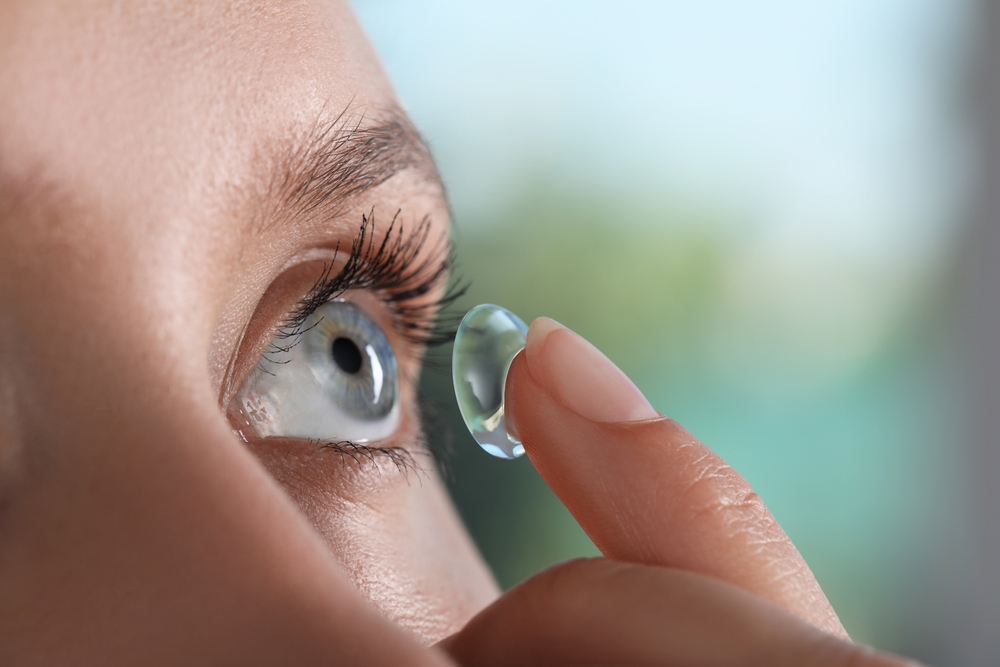Posted by: Associates in Ophthalmology (NJ) in Uncategorized

Proper lens care is one of the most critical aspects of safe contact wear, yet many patients underestimate its importance. Understanding when and why to replace your contact lenses can mean the difference between comfortable, clear vision and serious eye health problems.
Keep reading to learn more about how often you should replace your contact lenses.
Contact Lens Replacement Schedules
Each type of contact lens has specific characteristics that determine how often it should be replaced:
Daily Lenses
Daily disposable lenses are the gold standard for hygiene and convenience. These lenses are designed for single-day use and should be discarded every evening without exception.
Daily disposables eliminate the need for cleaning solutions and storage cases, significantly reducing the risk of contamination and infection. The fresh lens surface each morning provides optimal comfort and vision clarity.
Weekly Lenses
Weekly lenses are designed to be worn for exactly seven days, whether you wear them daily or occasionally during that week. Once the seven-day period ends, these lenses must be discarded regardless of how many times they were worn.
Bi-weekly lenses follow a 14-day replacement schedule from the first day of wear. These lenses require nightly cleaning and proper storage in fresh solution.
Monthly Lenses
Monthly lenses are replaced every 30 days from the first day of wear. These lenses typically have slightly thicker construction to withstand the longer wear period, but they still require meticulous daily care and proper storage to maintain their safety and effectiveness.
Why Lens Replacement Schedules Matter for Your Eye Health
Extending contact lens wear beyond the recommended replacement schedule significantly increases your risk of serious complications. Lens materials naturally degrade over time, becoming more susceptible to bacterial contamination.
Protein deposits, lipids from your tears, and environmental debris accumulate on the lens surface, creating an ideal environment for harmful microorganisms to grow. Older lenses also become more brittle and prone to tears, which can scratch your cornea or leave fragments in your eye.
As you continue to wear your lens beyond its removal date, the lens surface becomes rougher, leading to increased friction against your eyelid and corneal surface. Furthermore, protein deposits from your tears bind permanently to the surfaces of aged lenses, causing cloudy vision and reduced oxygen transmission.
Another concern that can cause significant discomfort is that extended contact lens wear can lead to lipid deposits forming an oily film that disrupts tear film stability, resulting in dry eye symptoms. The increased risk of infection is the most serious consequence of overwearing contact lenses.
Old lenses harbor bacteria and other pathogens more readily than fresh lenses. The risk of developing bacterial keratitis, a potentially sight-threatening infection, increases dramatically when lenses are worn beyond their replacement schedule.
Signs Your Lenses Need Immediate Replacement
Certain symptoms may indicate that your contact lenses should be replaced immediately, regardless of their scheduled replacement date. Recognizing these warning signs can prevent minor issues from developing into serious complications.
Vision Changes
Vision changes such as sudden blurriness, halos around lights, or difficulty focusing may indicate lens damage or significant deposit buildup. These symptoms warrant immediate removal of the lens and evaluation by an eye care professional.
Discomfort
Burning, stinging, or a sensation of something in your eye can indicate that your lenses are no longer compatible with your eye’s surface. Continued wear despite discomfort can lead to corneal damage and infection.
Lens Damage
Visible lens damage, such as tears, chips, or cloudy areas, requires immediate lens replacement. Damaged lenses can scratch your eye and provide entry points for bacteria and other pathogens.
Redness or Irritation
Persistent redness or irritation that doesn’t resolve shortly after lens insertion may indicate an allergic reaction, infection, or mechanical irritation from aged lenses.
Proper contact lens replacement schedules are essential for safe and comfortable contact lens wear. Associates in Ophthalmology emphasizes that your eyesight is irreplaceable, making lens care an essential investment in your long-term vision health.
If you’re experiencing any discomfort with your current lenses or have questions about your replacement schedule, contact Associates in Ophthalmology in Livingston, NJ, today to schedule a comprehensive evaluation.

